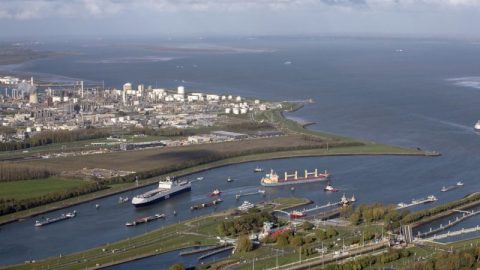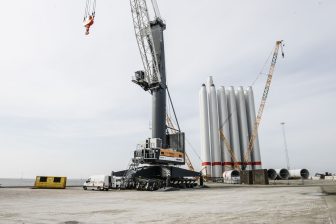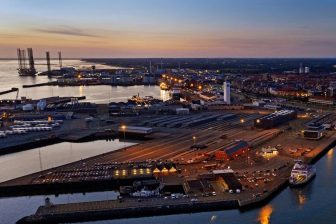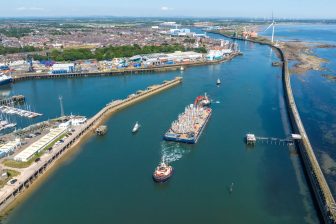
North Sea Port’s breakbulk volume also takes hit
Following the dramatic decline of breakbulk volumes in Antwerp, North Sea Port has also recorded a significant drop in the throughput of breakbulk. Cargo volume fell by 6.6% to 11 million tonnes in 2019.
Part of this decrease is attributable to fruit and other perishables which are increasingly being transported in refrigerated containers, the port authority states. North Sea Port has a large food industry importing fruit like bananas and exporting vegetables like onions.
Next to palletized perishable cargo, North Sea Port’s breakbulk volume also consists of project cargo, steel and forest products. Although the port authority did not specify the results of every cargo type separately, it did mention that “the transhipment of machines is on an upward trend.”
Ro/ro volumes, however, fell to 3.2 million tonnes (-9.6%), with a noticeable fall in the number of vehicles and trailers.
North Sea Port and Antwerp are Europe’s largest breakbulk ports, although they focus on different types of cargo. Antwerp’s breakbulk volume is largely made of up steel cargoes which have been hit by the US tariffs and weak automotive industry. As a result, the conventional breakbulk volume of Belgium’s largest port fell by 18% last year.
Record year
Despite the decline in breakbulk volume, North Sea Port has posted a record year for the third year in a row. Total cargo throughput rose by 1.5% to 71.4 million tonnes.
The growth was mainly driven by dry bulk and containers. “Two years after its launch as a merged port, North Sea Port is maintaining its position as a true bulk gateway and is also making progress as a hub for containers between maritime and inland waterways”, the port authority comments.
Almost half of the goods that North Sea Port tranships is dry bulk. That volume rose to 34.6 million tonnes last year (+5.4%) thanks to a strong construction sector which led to increased transhipment of sand, gravel and construction materials in 2019. Coal transhipment and agricultural products remained steady, while scrap and ores showed a small decline.
Container transhipment jumped up 48.7% and amounted to a total of 2.5 million tonnes and 330,000 TEU. North Sea Port’s container volume is relatively small although the segment has doubled in the past two years. According to the port authority, this is the result of attracting new services and an increase in refrigerated containers, meaning the lost perishable breakbulk volume still arrives in the same port.
The port is also growing as a hub for onward transport of containers from maritime shipping to the hinterland via inland waterways. Inland shipping transhipment volumes grew from 58 to 60 million tonnes last year, bringing the port’s total transhipped cargo volume to 131.4 million tonnes.
Cautiously optimistic
Looking forward, shrinking economic growth, trade wars and Brexit provide reasons for caution, according to the port authority. With that in mind, the port expects the trend of light growth to continue in 2020. “North Sea Port is cautiously optimistic for 2020, as it was in early 2019”, the board states.
North Sea Port was formed in 2017 through a merger of the Dutch ports of Vlissingen and Terneuzen and the Belgian port of Ghent.
You just read one of our premium articles free of charge
Register now to keep reading premium articles.




